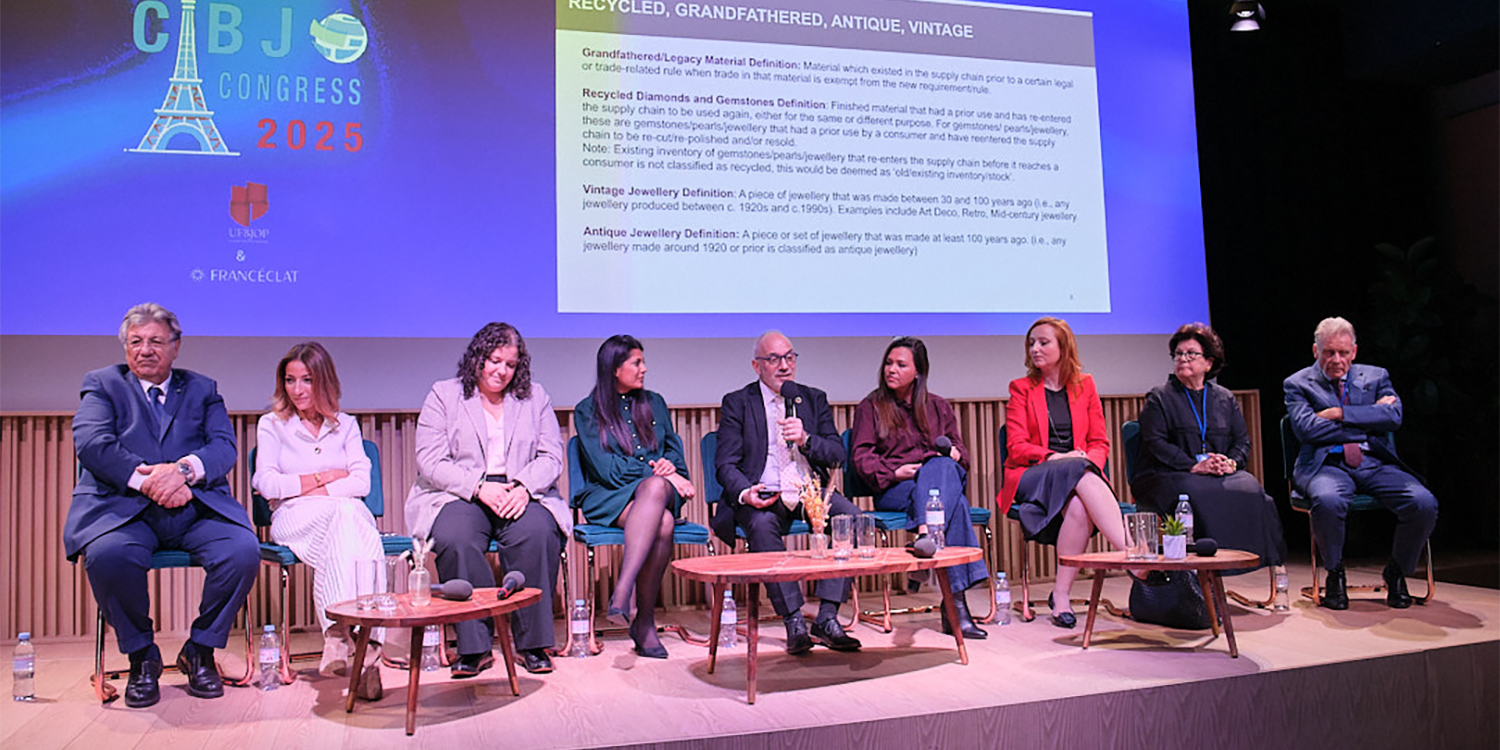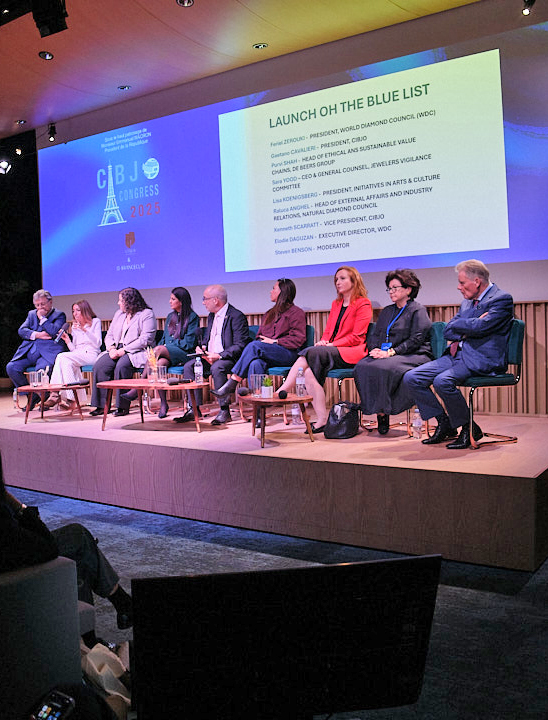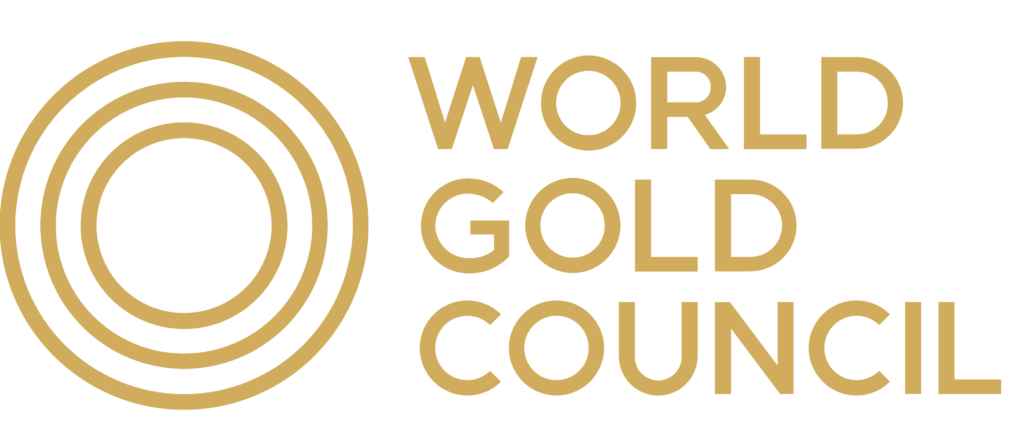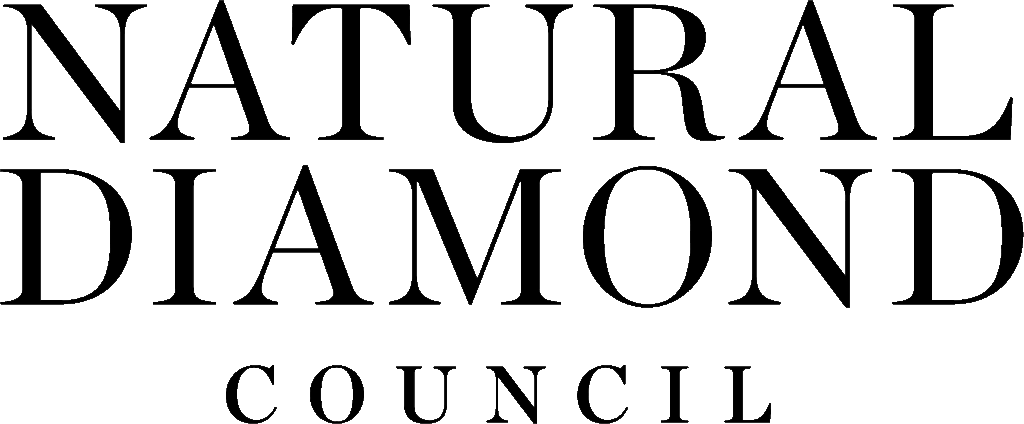CIBJO Congress receives update on the Blue List,
a lexicon of terms describing responsible supply chains
Members of CIBJO’s Responsible Supply Chain Nomenclature Committee presenting the Blue List at the CIBJO Congress n Paris in October 28, from left: Gaetano Cavalieri, President CIBJO and committee co-chair; Feriel Zerouki, Feriel Zerouki, De Beers’ Chief Trade and Industry Officer and President of the World Diamond Council, committee co-chair; Sara Yood, CEO and General Counsel, Jewelers Vigilance Committee; Purvi Shah, Head of Ethical and Sustainable Value Chains, De Beers Group, committee lead; Steven Benson, CIBJO Communications Director, moderator; Elodie Daguzan, Executive Director WDC; Raluca Anghel, Head of External Affairs and Industry Relations at the Natural Diamond Council; Lisa Koenigsberg, President, Initiatives in Arts & Culture; and Kenneth Scarratt, Vice President CIBJO.
OCTOBER 28 2025
The 2025 CIBJO Congress received an update on CIBJO’s Blue List initiative, which began in 2019 and involved comprising nomenclature recommendations for terms to describe products, processes and mechanisms in responsible jewellery supply chains.
In a panel discussion at the CIBJO Congress, moderated by CIBJO Communications Director Steven Benson, CIBJO President Gaetano Cavalieri, a co-chair of the Responsible Supply Chain Nomenclature Committee, related the history of development of the Blue List.
He spoke of the detailed scrutiny by members of the working groups to add words and reach clear definitions to give the right information to consumers.
Feriel Zerouki, De Beers’ Chief Trade and Industry Officer and President of the World Diamond Council, who also is a co-chair of the committee overseeing the initiative, spoke of the history of the Blue List and how members of the working group managed to overcome confusion over terms.
“If we are not using the same language, how can we not expect to confuse the consumer,” she said.
CIBJO has a proven track record in developing standards, including terminology, over its history spanning almost a century.
The work to construct the Blue List incorporated the input of industry leaders, lawyers and governance experts.
The words that came under review in the deliberations to develop the “Blue List” over more than one year, focused on terms which may have lacked clarity, such as “responsible”, “ethical” and “sustainable”.
As an example of the deliberations, Elodie Daguzan, Executive Director of the World Diamond Council, outlined discussions over the meaning of the term “origin” – the “where”, which can be a mine, region or country.
Mr Benson referred to discussions over other terms, including “grandfathered”, a legacy material definition.
Sara Yood, CEO, Jewelers Vigilance Committee, said she did not like to use the term “grandfathered”, as it had been used historically in a racially divisive context.
Lisa Koenigsberg, President of Initiatives in Arts and Culture, spoke of the discussion to reach agreement on definitions of the terms “vintage jewellery” and “antique jewellery”.
Purvi Shah of De Beers Group discussed use of the term “recycled”, focused on how to reduce complexity in the definition, with a focus on gemstones, diamonds and pearls – entering the value chain to be re-processed.
Tracing terminology, relating to traceability, caused much anguish in the work surrounding the Blue List as the term had created confusion, Ms Zerouki said.
She underlined that traceability does not mean blockchain, for example. Blockchain was a tool used to achieve traceability.
The panel spoke of terms to avoid using, such as “eco-friendly”, and “environmentally friendly”, as the terms are too broad; biodegradable – the term is not applicable to the precious jewellery industry; and “green” jewellery material, as the term is too broad.
Kenneth Scarratt, CIBJO Vice President, outlined considerations used in agreeing nomenclature surrounding coloured gemstones.
The colour stone industry is very fragmented, he said.
To have traceability in the colour stone industry, is very challenging, he added.
Most coloured gemstone supplies were reaching the market via a myriad of small-scale mine suppliers, making traceability difficult to achieve in this industry segment.
Traceability in pearling was much more feasible, Mr Scarratt said.
Ms Shah said the working group for the Blue List had received ample feedback from the trade around the world over the terms, including constructive criticism.
One of the most complicated and challenging terms to reach agreement on, was the word “sustainability”, she said.
CIBJO had originally approving a first edition of the Blue List at the CIBJO Congress this year, but following extensive feedback from the four-month public consultation that began last May, it was agreed to delay its release, while certain adjustment and changes were made.
It is hoped that the approved first edition of the Blue List will be released during the first quarter of 2026, Dr. Cavalieri and Ms. Zerouki said.
TIER 2 SPONSORS










